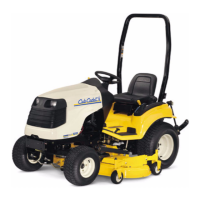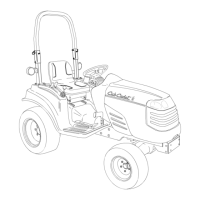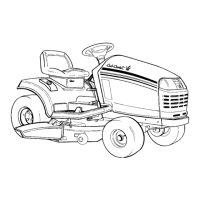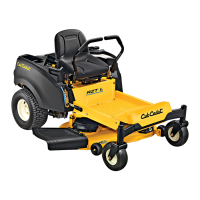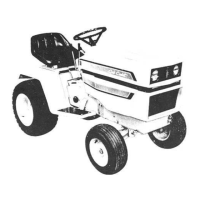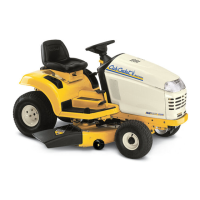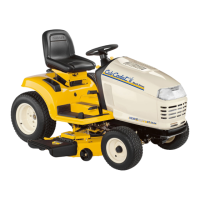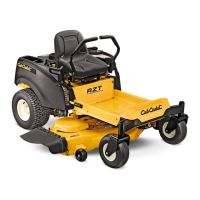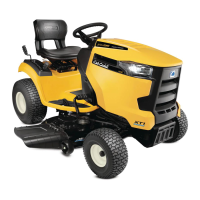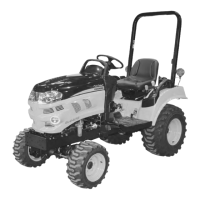Domestic Series 7000 Hydraulics
8
4. BEST PRACTICES: HYDRAULIC SYSTEMS
NOTE: TESTS All hydraulic tests should be
done with the fluid at normal operating tempera-
ture, and the engine at normal operating speed.
In practical terms, normal operating temperature
means that the tractor should be operated (if not
disabled) for about 5 minutes before testing in
normal temperate climates. This should achieve
a fluid temperature of 180 deg. f. (82 deg. c.) If
the tractor has been sitting outside for a week
during February in Green Bay, Wisconsin, it is
advisable to store the tractor in a heated shop
for 12 hours before testing. Normal operating
speed is 3,000RPM.
NOTE: CLEANLINESS It is very important to
keep dirt out of hydraulic systems.
• Cleaning the areas around any joint to be dis-
connected, or component to be removed is
advisable.
• Contaminated fluid should be disposed of prop-
erly, not re-used.
• Tools and work benches used for work on
hydraulic systems should also be kept clean.
• Catch pans beneath work will ease clean-up.
NOTE: CAUTION High pressure hydraulic
leaks can be dangerous.
• Wear eye protection while performing tests.
• Do not operate any equipment with obvious
damage to parts such as hoses.
• Do not disconnect any fittings that may be under
pressure. Turn-off the engine and operate the
circuit to relieve pressure.
• Remember that anything (front-end loaders,
backhoe buckets, three-point hitches, etc....) that
is supported by hydraulic pressure will be sub-
ject to gravitational force when that pressure is
relieved.
NOTE: Sealants
• O-ring fittings require no sealant, though light
lubrication with the fluid used in the system is
sometimes helpful.
• Teflon tape is to be avoided. “Flash” from the
tape can dislodge, blocking valves and damag-
ing pumps.
5. FLOW AND PRESSURE TESTS:
HYDROSTATIC DRIVE
5.1. If the problem is not revealed by any of the
external checks, check the charge-pump pres-
sure.
5.2. Clean the area surrounding the set screw in the
top of the hydrostat. Remove the set screw
using a 3/16” allen wrench. See Figure 5.2.
NOTE: The port accessed by removing the set
screw will be pressurized by the charge pump
when the engine is running.
5.3. Connect a gauge that is capable of reading
1,000 PSI (69 Bars) to the port that the set screw
was removed from. The port is threaded to
accept a 1/8” pipe thread.
NOTE: The gauge should be equipped with a
hydraulic snubber or needle valve to damp the
pressure pulses created by the pump.
CAUTION: Confirm that no unsafe conditions
will be created by starting the engine or operat-
ing the drive system before perfoming the test.
Remember that the front drive axle on four-
wheel drive Domestic Series 7000 tractors will
engage automatically.
Figure 5.2
Set screw
Port
